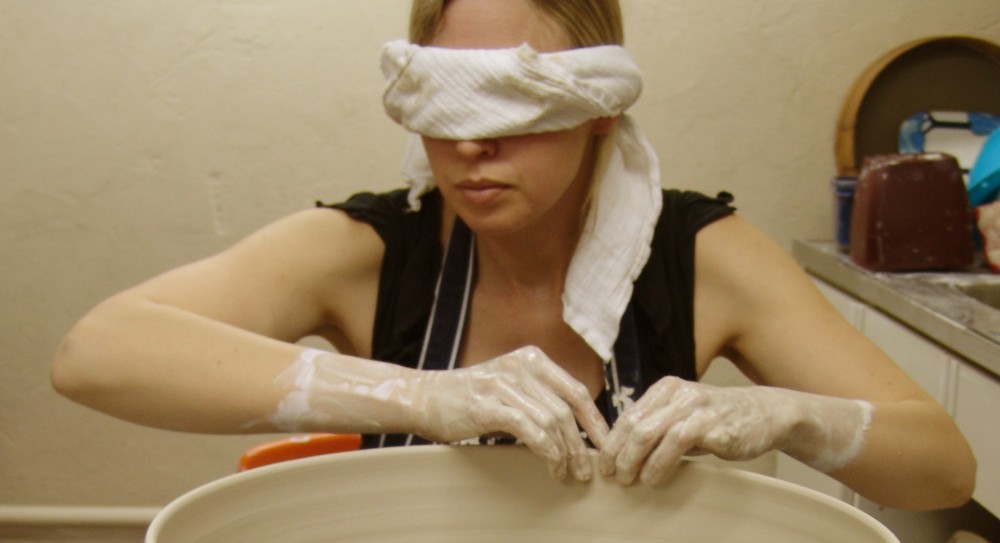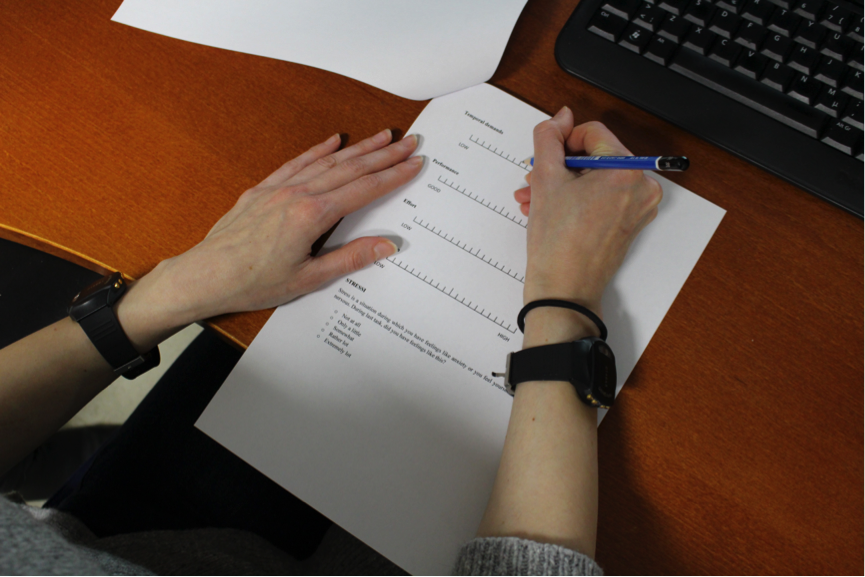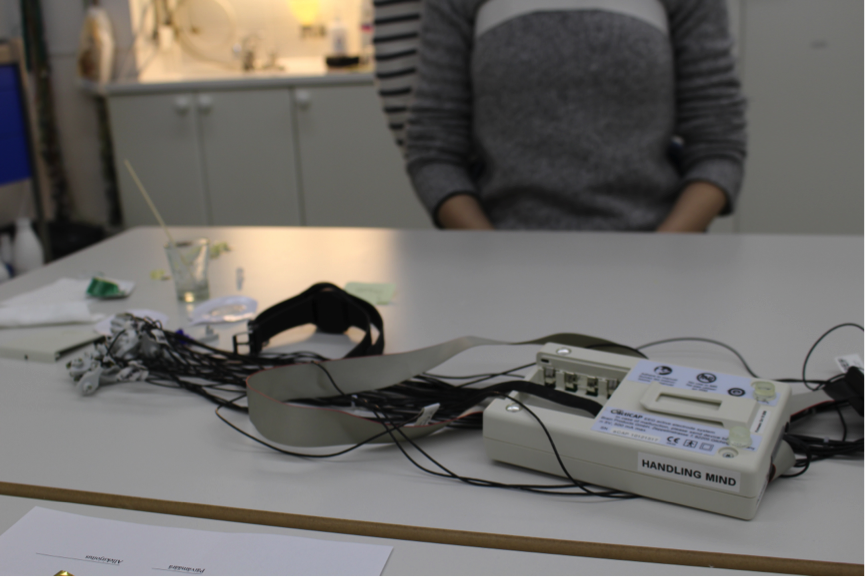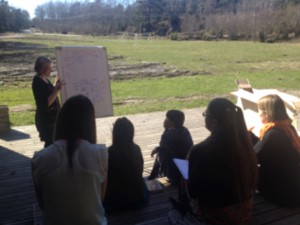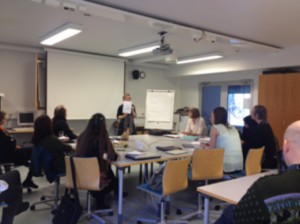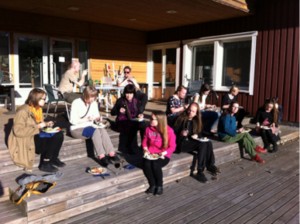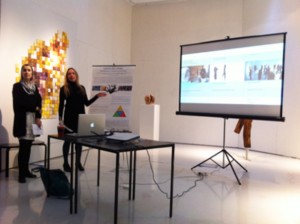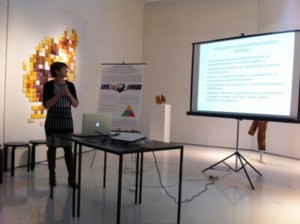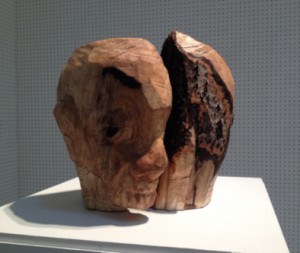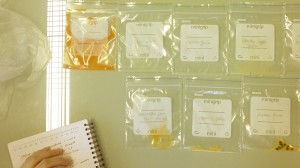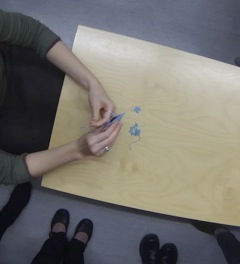(Original text by Camilla Groth)
During the period of 18/11 2014 – 15/3 2015 we collected data for Track C at the Aalto University, School of Art, Design and Architecture. The aim of the Track C research strand is to research physiological reactions during design processes while drawing and forming clay.
30 Design students and professionals participated in physiological tests during a 5,5 hour long research day, including lunch and an interview. The participants performed drawing and clay forming tasks according to instructions given on a computer screen. The participants were also interviewed on the subject of their creative process by two Ma students from the University of Helsinki, Department of Teachers’ Education.
During the test the paticipants were wearing two activity sensors (Actigrafia) on their arms and a heart-rate sensor (Faros) on their upper chest. Between the test sessions the participants were filling in questionnaires about their moods at the different points of the test. They also evaluated them selves whether they were experts or novices in drawing and forming.
The study was based on two different research settings. The specific research questions for the first setting are the following:
- How do drawing and forming clay differ in terms of copying, creating novel design or free improvisation tasks?
- Is copying more frustrating than creating novel design?
- Is designing a cup more frustrating than free creative improvisation?
By instructions the participants either molded in clay or drew three types of drawings: 1) copy of a line drawing of a cup (i.e., copying task) 2) a creative design of a cup (i.e., design task) and 3) a creative drawing of a self-chosen topic (i.e., free improvisation task). Prior to forming or drawing, the students had 10 seconds to look at the drawing or plan their work. The following instructions appeared on a computer screen: 1) Be ready to copy this image; 2) Be ready to design and draw or mold a new type of cup; or 3) Be ready to draw or form whatever you want.
The time of drawing and molding was restricted to two different timeframes, one long and one short. Each of the three tasks was done 10 times. After a break the stimulated recall interview was arranged, the interviewer watched the video privately with each of the paticipants, and they had the possibility to reflect and comment on their work (probing certain feelings, inspirations, disturbances and pressures). The interviewer noted the emotional aspects as well as remarks related to the work itself. The stimulated recall session was also video recorded for subsequent analysis.
After this process we further screened these participants for subjects suitable for EEG measurements during the same research setting as described above. Five research participants were selected and the additional measurements were performed at the Finnish Occupational Health brain laboratory in December 2015.
The analysis process is still in progress for the EEG measurements. However we experienced that the HRV and participant interviews showed the largest amounts of frustration in the copying task compared to the free task. We also found that forming clay and drawing showed differential effects in students who are used to working with clay / drawing.
The data collection was facilitated by Doctoral students Marianne Leinikka and Camilla Groth. Five students from the Design department assisted in measuring of the subjects. Research professor Minna Huotilainen from the Finnish Institute of Occupational Health – Brain and Work Research Centre was the responsible researcher in this track.
One publication has already been published in this track:
Seitamaa-Hakkarainen, P., Huotilainen, M., Mäkelä, M. Groth, C. & Hakkarainen, K. (2014). The promise of cognitive neuroscience in design studies. In Lim, Y.-K., Niedderer, K., Redström, J., Stolterman, E., & Valtonen, A. (Eds.). (2014). Proceedings of DRS 2014: Design’s Big Debates. Umeå, Sweden: Umeå Institute of Design, Umeå University. pp. 834-846.
Another research paper, presenting and discussing the first analysis of this collected data, has just been accepted to the DRS 2016 Conference in Brighton, and will be presented there this summer. We are currently in the process of analysing the data from the last measurements that we hope will summon into yet one publication during this last year of the Handling mind project 2013-2016.
